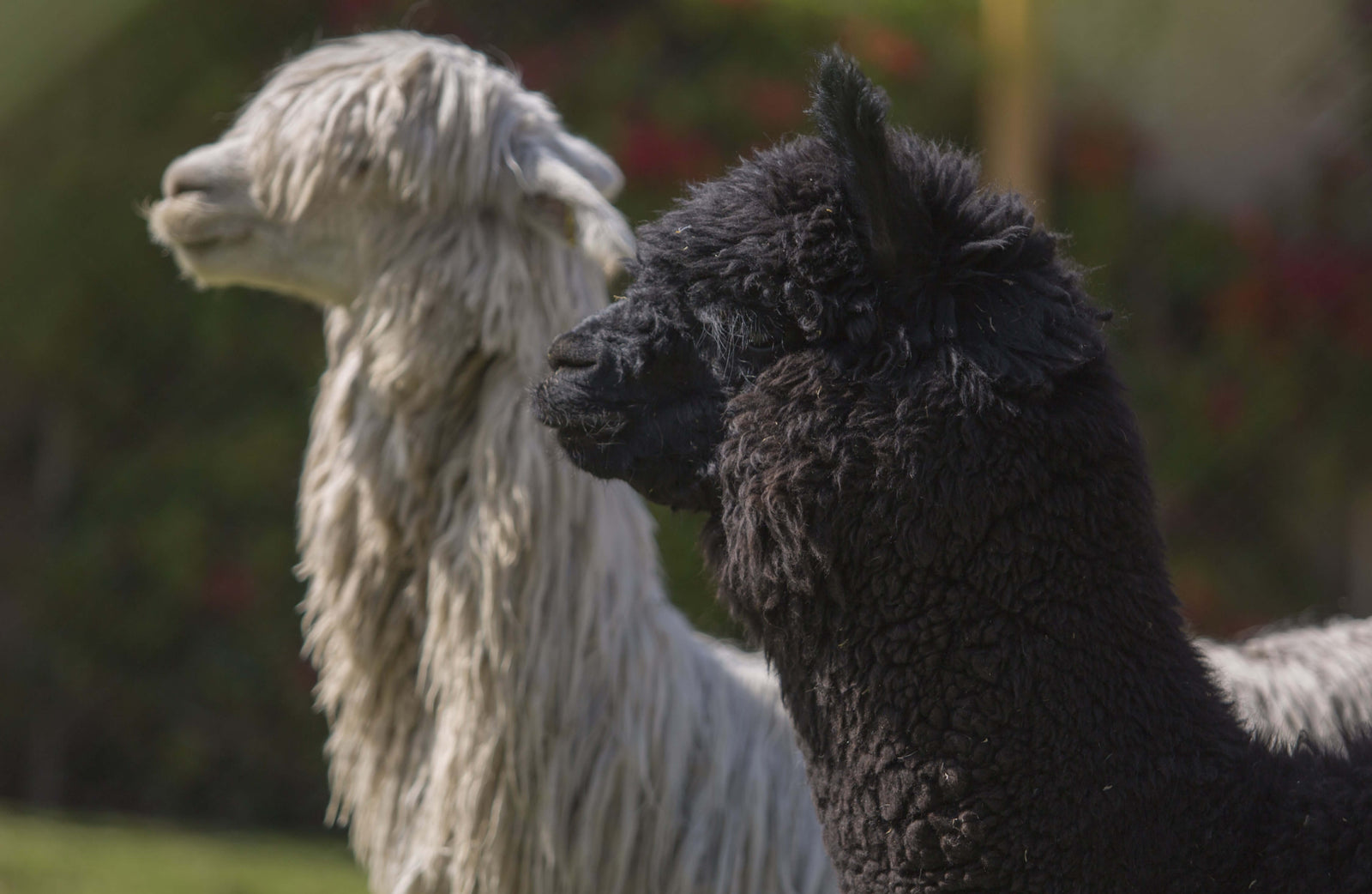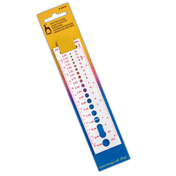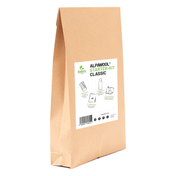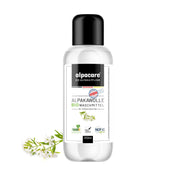About 5,000 years ago, the inhabitants of the South American Andean highlands, particularly Peru, domesticated the alpaca, a wild camel native to these alpine areas. Over time, these animals were bred specifically for the valuable fiber they produce (unlike their relative, the llama, which was domesticated as a working animal). The Incas called the beautiful, soft fiber shorn from these animals "the gold of the Andes" and reserved it for the clothing of the Inca kings. Today, 87% of the world's alpaca population is found in Peru.
There are two types of alpacas, the Huacaya and the Suri. The Huacaya is the more common, familiar and cuddly type with a fluffy, fleece-like coat. The fleece of the Huacaya grows and looks curly and somewhat springy. This is because the fiber has a smoother "fuzzy" surface than sheep's wool. The naturally smooth surface of the alpaca fiber provides a softer touch and shinier appearance.
The Suri Alpaca produces an even silkier fiber. It is believed that less than 10% of the world's alpaca population is of this species, which has a distinct, shaggy appearance when unshorn. The fleece falls in long, silky locks down the sides of the body. This fiber is not as curly as that of a Huacaya - less fluffy and flowing - and therefore not as springy, but it has a beautiful, soft sheen and is soft and airy to the touch.
Alpacas, both Huacayas and Suris, have a range of different coat colors, up to 22 different shades. From the darkest black to the creamiest ivory, from the warmest chestnut brown to the softest gray, the natural shades are so beautiful that one hardly dares to dye them. Nevertheless, alpaca fiber dyes beautifully.
In our ALPAWOOL® range you will find a colour palette with the most beautiful natural colours and a range of classic plain and melange colours that can be perfectly combined with each other.




